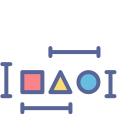Wege, Kanten und Räume
Leicht geschwungene Wege verlangsamen, gerade Wege betonen Achsen. Kies, Rinde oder Stein verändern Atmosphäre und Pflegeaufwand. Ich verbreiterte den Hauptweg um 20 Zentimeter: plötzlich passten zwei Personen nebeneinander und Gespräche entstanden ganz von selbst.
Wege, Kanten und Räume
Essplatz, stille Leseecke, Spielbereich – kleine Räume mit Hecken, Pergola oder Hochbeeten schaffen Ordnung. Eine Leserin setzte eine halbdurchlässige Rankhilfe und gewann Privatsphäre, ohne Licht zu verlieren. Welchen Raum möchtest du zuerst definieren?









